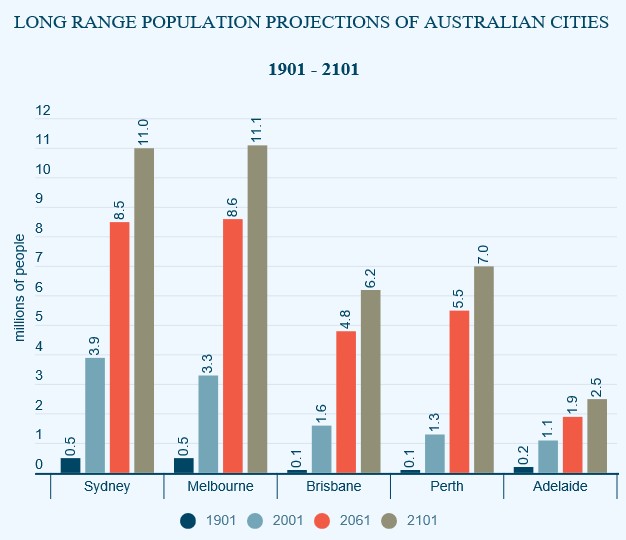For years, KPMG’s Bernard Salt – the self proclaimed “unabashed supporter of a bigger Australia” – has produced reams of articles pushing rapid population growth and warning that to not follow this path would lead to an economic and fiscal catastrophe.
Over the weekend, Salt once again went in to bat for a ‘Big Australia’. From the Herald-Sun:
Projections by the Australian Bureau of Statistics put the nation’s population at 40 million within the next 40 years, more than double what it was just a decade ago…
Social researcher Mark McCrindle said Australia’s population was being driven higher by a combination of new migrants, a birth boom and a longevity boom.
“It’s big numbers. The 1.4 per cent per annum current increase sounds modest in percentage terms, but is one new Darwin every 20 weeks and a new Tasmania every 18 months,” he said. Darwin’s current population is about 145,000…
“People with property will gain from that. Those without property are not really sharing in the wealth that the growth brings,” he said.
However, everyone in large cities would feel the strain of traffic bottlenecks, increasing travel times, longer waiting lists and infrastructure issues he said.“Some of our cities are starting to feel the pain of that. Australia has been pushing the red line in the past decade or so”…
KPMG demographer Bernard Salt said Sydney and Melbourne were on track to add another three million people each within 40 years… He said the projected growth would mean “greater competition for housing in the future than ever before”. This would require increased housing density and more employment closer to where people lived, he said…
“We might lament the fact that Melbourne and Sydney are not what they once were, but they are better places than equivalent cities in the northern hemisphere”…
“Some people say they want Australia to be better, not bigger. I want Australia to be bigger and better, because it is bigger and better today than it was 10, 20 and 40 years ago.”
Let’s be clear. The fundamental driver of Australia’s population growth is mass immigration.
Australia’s birthrate of 1.8 is below replacement level and the nation’s population would stablise at 27 million by 2060 under zero net overseas migration, according to the Productivity Commission. By contrast, if current mass immigration setting are maintained, Australia’s population will exceed 40 million – a difference of at least 13 million people (see below chart).
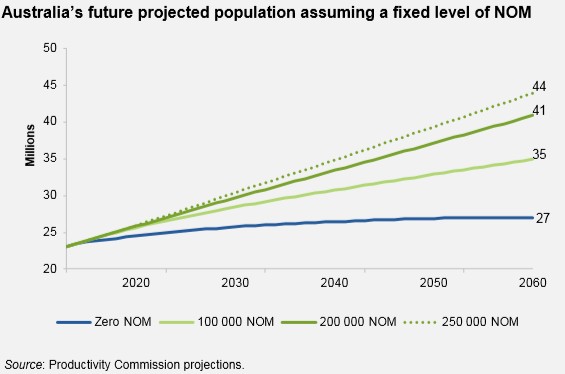
Six months ago, Bernard Salt recently published population forecasts of his own, which projected that the population’s of Sydney and Melbourne could climb to 11 million by the end of the century:
I find these population projections truly horrifying. Sydney and Melbourne are already straining under 12 years of rapid population growth, which has seen Sydney’s population increase by around 800,000 and Melbourne’s by around one million. These cities are already ceasing to function properly, with infrastructure bottlenecks commonplace and housing affordability amongst the worst in the world. So I hate to imagine how badly they would operate in the event that they roughly tripled in size. They would become a nightmare to live in.
Australia’s population has already reached a sufficient scale and is now big enough to void the need for continued mass immigration. This way, we could begin to repair our infrastructure deficit and the strains caused by rapid population growth, not worsen them.
With the above issues in mind, Salt’s claim that Australia is “bigger and better today than it was 10, 20 and 40 years ago” is highly spurious. Australian housing is unquestionably more expensive than ever and will only get worse under current immigration settings, as admitted my Salt:
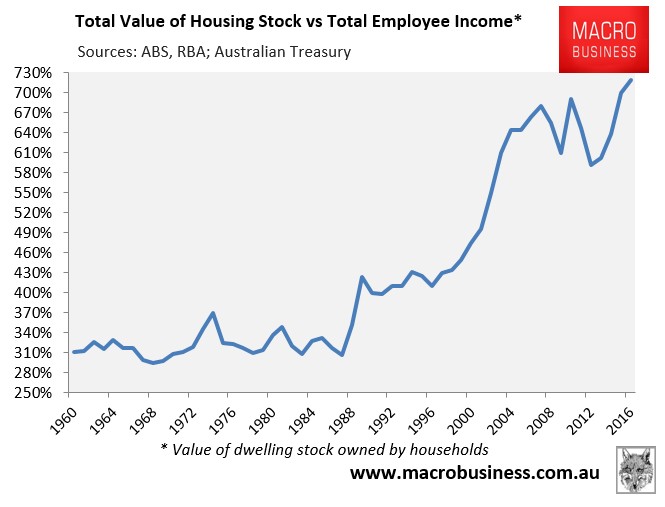
Australia’s job market is arguably more precarious than ever, with the availability of full-time jobs at a record low:
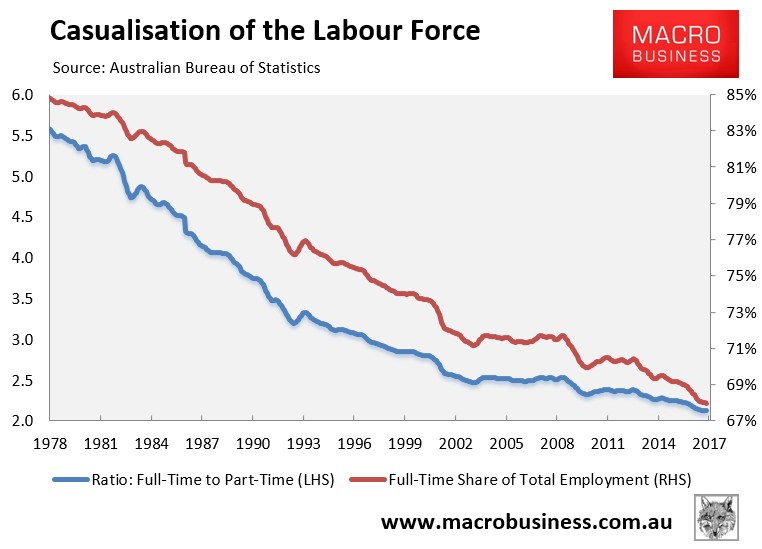
And underemployment the highest on record, with Australia’s youth faring the worst:
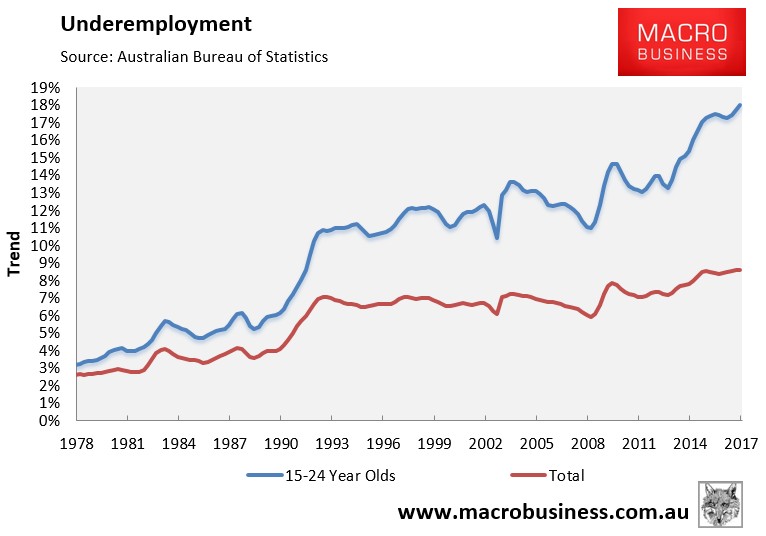
And then there’s Australia’s wages, which are barely growing any more:
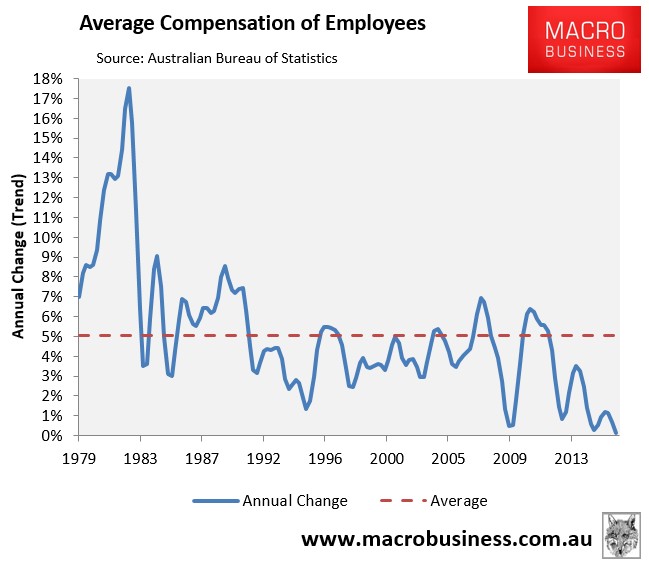
And have failed to keep pace with labour productivity:
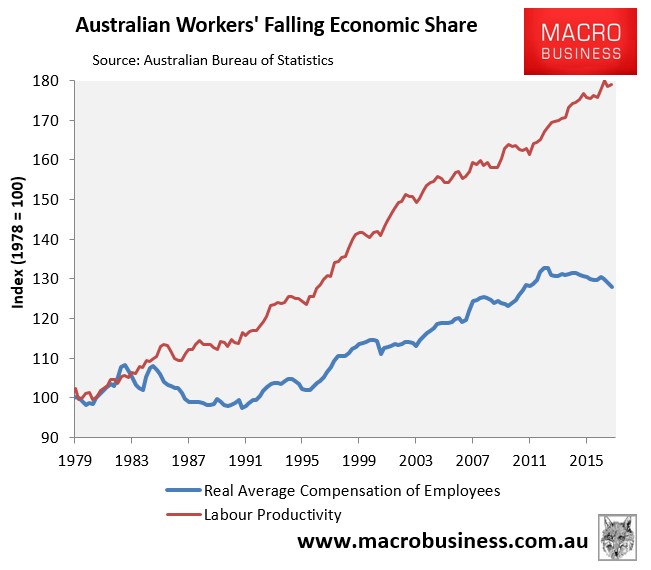
With Australian workers’ share of Australia’s Total Factor Income (TFI) falling for decades, whereas business’ profits share has been increasing:
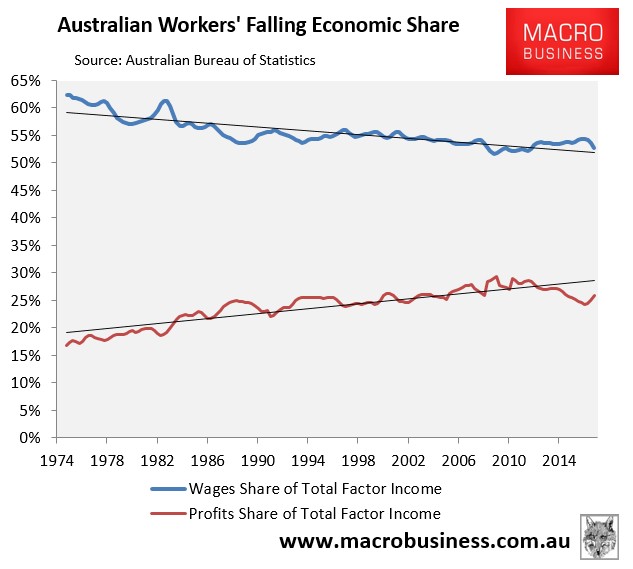
And then there’s the soaring costs of congestion in our choking big cities:
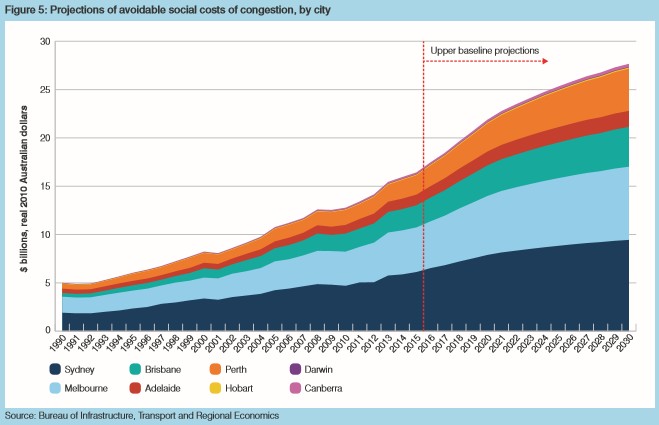
It would be nice if population boosters, like Bernard Salt, would for once admit that Australia’s mass immigration settings are not benefiting ordinary citizens, especially those living in our major cities.
Ordinary workers’ wages are getting pushed down through immigration. Every year the infrastructure deficits in both Sydney and Melbourne are getting worse, along with congestion. Housing affordability and overall livability are also deteriorating each year as more and more people flood into each city and push against bottlenecks amid woeful planning.
Immigration should be set at levels that maximises the welfare of the incumbent population, not used as a lever to artificially pump-prime economic activity for the benefit of big business and the property industry, which Bernard Salt represents.
How do commentators like Salt propose that our big cities accommodate this never-ending flood of people without adversely impacting existing residents’ living standards? And please explain to us ordinary folk why having 80,000 to 100,000 people flooding into Sydney and Melbourne every year desirable?
The case for a “Big Australia” has never been made.

